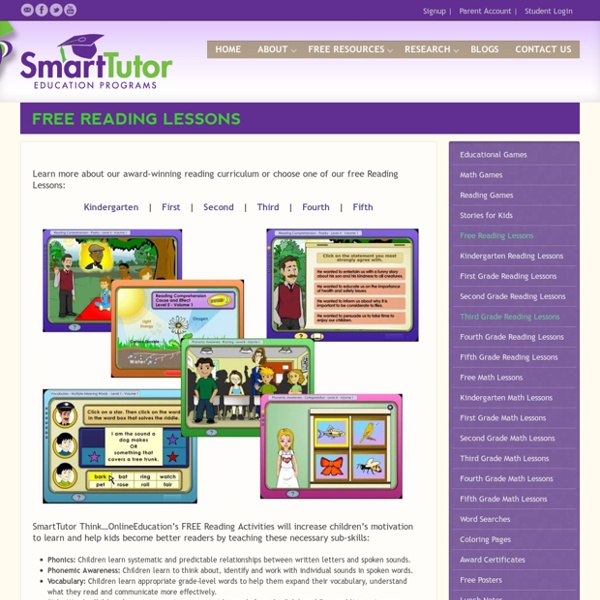Reading Comprehension - Free Worksheets
Home- English- Math - Reading - Research - Keys - Newsworthy - Links - Contact Reading Comprehension, Volume 5: Number 32, Word Meanings From Context Number 31, The Painting Number 30, Word Meanings From Context Number 29, Charity, Poem
20 Amazing and Essential Non-fiction Books to Enrich Your Library
Post written by Leo Babauta. Follow me on Twitter. I’m an avid reader of fiction and just love a novel that transports me, that is so gripping that I can’t put it down.
Free Reading Worksheets
Ereading Worksheets has the best reading worksheets on the internet, and they’re all free. These worksheets are skill focused and aligned to Common Core State Standards. You are free to save, edit, and print these worksheets for personal or classroom use. Many of these assignments can now be completed online. You’re going to like this.
To My Old Master
In 1864, after 32 long years in the service of his master, Jourdon Anderson and his wife, Amanda, escaped a life of slavery when Union Army soldiers freed them from the plantation on which they had been working so tirelessly. They grasped the opportunity with vigour, quickly moved to Ohio where Jourdon could find paid work with which to support his growing family, and didn’t look back. Then, a year later, shortly after the end of the Civil War, Jourdon received a desperate letter from Patrick Henry Anderson, the man who used to own him, in which he was asked to return to work on the plantation and rescue his ailing business. Jourdon’s reply to the person who enslaved his family, dictated from his home on August 7th, is everything you could wish for, and quite rightly was subsequently reprinted in numerous newspapers.
Reading Comprehension Worksheets
"Your reading comprehension materials are the best I've found on the web. They are so thorough and comprehensive! My students and I have learned a lot from them. Thanks so much!" -- Susan B., Carter, KY. 03/21/12 Like these materials?
700 Free Audio Books: Download Great Books for Free
Download 3 Free Audiobooks from AudioBooks.com Download hundreds of free audio books, mostly classics, to your MP3 player or computer. Below, you’ll find great works of fiction, poetry and non-fiction, by such authors as Twain, Tolstoy, Hemingway, Orwell, Vonnegut, Nietzsche, Austen, Shakespeare, Asimov, HG Wells & more. Also please see our related collection: The 150 Best Podcasts to Enrich Your Mind. Fiction & Literature
How to Find the Main Idea
Main Idea Practice Finding the main idea of a paragraph along with making an inference, finding the author's purpose, or understanding vocab words in context is one of the reading skills you'll need to master before taking the reading comprehension section on any standardized test. What is the main idea? The main idea of a paragraph is the point of the passage, minus all the details. It's the big picture - the Solar System vs. the planets. The football game vs. the fans, cheerleaders, quarterback, and uniforms.
Help Students Identify the Main Idea of Any Text
When teaching students about main idea, scaffold your instruction. Students need to first learn how to identify the concrete and literal before they can determine the inferential. Here's a series of skills to slowly work through with your readers. First, help students identify key words (nouns and verbs) found within a single sentence.



